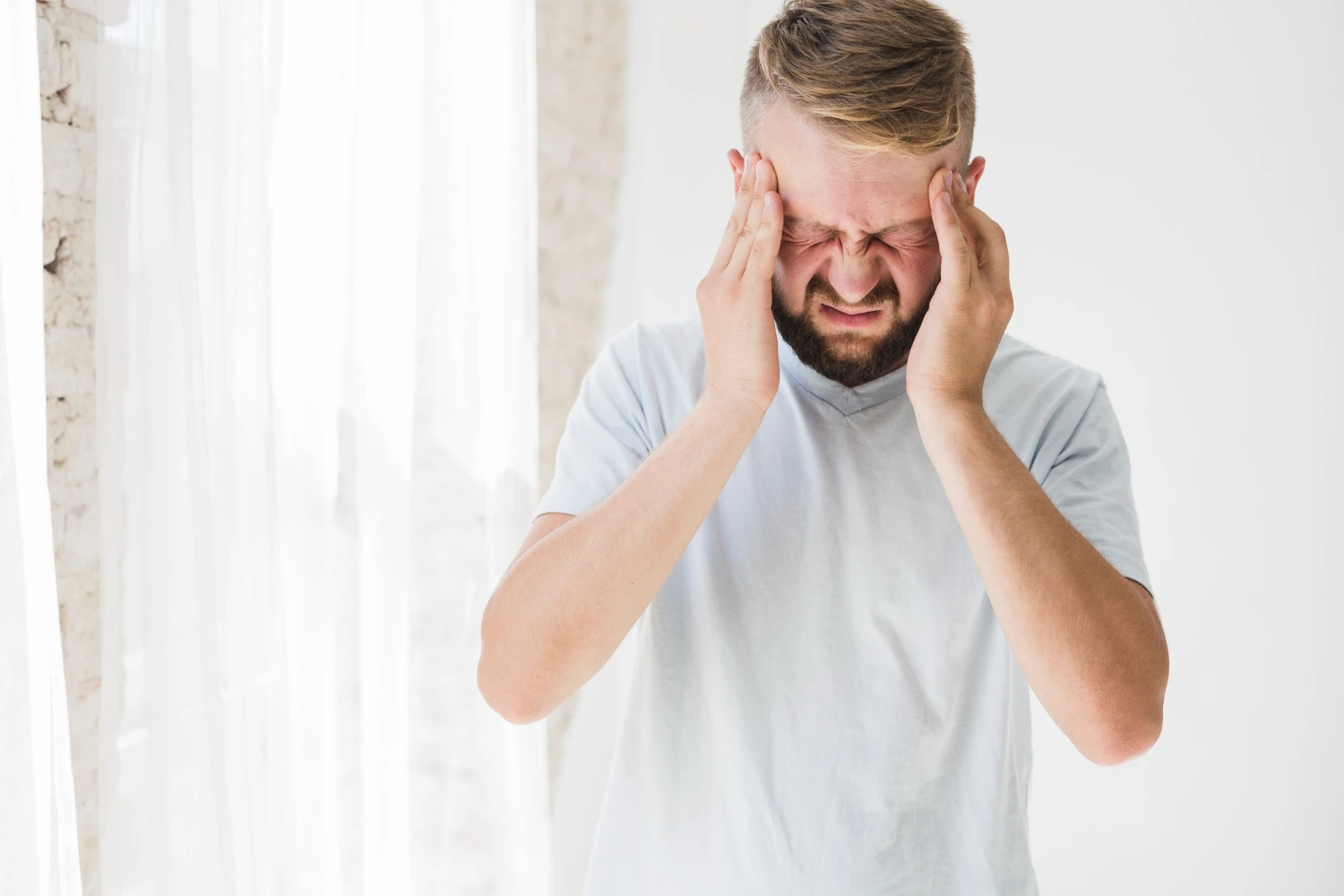Postural Orthostatic Tachycardia Syndrome (POTS) can significantly impact daily life, yet many people remain undiagnosed due to its complex and varied symptoms. [1]
It’s commonly misunderstood and often misattributed to anxiety. If you have recently been diagnosed or are looking for the best postural orthostatic tachycardia syndrome treatments, this guide will help you learn everything you need to know, from diagnosis to long-term treatment strategies.
How is POTS Diagnosed?
POTS diagnosis involves identifying a persistent increase in heart rate when transitioning from lying to standing, without a corresponding drop in blood pressure.
Standard diagnostic methods include:
- Tilt Table Test: The patient is secured on a table that tilts from a horizontal to vertical position while heart rate and blood pressure are monitored.
- 10-Minute Standing Test: Involves measuring vitals while the patient stands still for 10 minutes.
- Autonomic Reflex Screening: Evaluates how the autonomic nervous system responds to stressors.
- Blood Volume and Catecholamine Testing: Assesses blood flow and adrenaline-related function.
- Electrocardiogram (ECG) and Echocardiogram: Rule out structural heart issues.
- Holter Monitoring: A 24-hour ECG to detect heart rhythm irregularities.
- Active Stand Test: Performed in clinic or as an at-home POTS test. [1]
These tests help establish the POTS diagnosis and rule out similar conditions.
Who diagnoses and treats POTS
Many patients begin with a primary care physician but are eventually referred to cardiologists, neurologists, endocrinologists, and physical therapists. [2] Those seeking effective POTS treatment may benefit from multidisciplinary clinics combining cardiology, neurology, and neuromuscular therapy.
How do you treat POTS in Canada?
In Canada, POTS treatment typically begins with lifestyle modifications, such as hydration, salt intake, and graded exercise. Some Canadian clinics now offer specialized programs for postural orthostatic tachycardia syndrome supportive therapy. Virtual consultations are expanding access across provinces. [3]
POTS Treatment Options
There’s no one-size-fits-all treatment for POTS, but options are expanding. Most patients benefit from a combination of medication, neuromuscular therapy, nutrition, and lifestyle support.
Moore MyoWorx’s POTS Therapy
Moore MyoWorx offers a holistic neuromuscular approach to POTS treatment, particularly valuable for patients whose symptoms are linked to nervous system dysfunction or prior concussions.
Our methodology combines manual therapy, neuromuscular retraining, and individualized exercises. This integrated technique aims to reduce overstimulation in the autonomic nervous system, improve circulation, and restore healthy communication between the brain and body.
Unlike traditional approaches that focus solely on cardiovascular symptoms, Moore MyoWorx addresses structural and neurological contributors to POTS syndrome treatment. Our team works closely with patients to evaluate musculoskeletal imbalances, respiratory patterns, and neurovascular tension, often key contributors to persistent symptoms.
Many individuals report enhanced recovery, improved endurance, and better daily function after completing the program.
POTS Medications
Common postural orthostatic tachycardia syndrome medications include:
- Beta-blockers (e.g., propranolol) to control heart rate
- Fludrocortisone to retain salt and fluid
- Midodrine to increase vascular tone
- Ivabradine for heart rate regulation without lowering blood pressure [4]
These are standard treatments. However, some patients also explore SSRIs, SNRIs, or pyridostigmine depending on symptom profile and comorbid conditions. Finding the right medication for tachycardia in POTS requires trial and error, guided by a specialist. New POTS medical trials are exploring hormonal and immunological pathways.
Postural Orthostatic Tachycardia Syndrome Self-Care
Self-care is a cornerstone of managing symptoms. A solid POTS diet includes:
- High sodium intake (2–4 grams/day)
- Adequate hydration (2–3 liters/day)
- Small, frequent meals
- Limiting alcohol and caffeine [5]
Exercise is equally important. POTS physical therapy often begins with recumbent cardio (e.g., rowing, swimming) before progressing to upright activities.
Recommended supplements for POTS include:
- Electrolyte to restore balance
- Vitamin B12 and folate to support nerve function
- Magnesium for muscle and nerve relaxation
- Coenzyme Q10 for cellular energy [6]
Self-care also involves sleep hygiene, stress reduction techniques, mindfulness, and the use of compression garments. All of these make up effective postural orthostatic tachycardia syndrome self-care.
Are There Natural Remedies for POTS?
Yes, many patients look for relief beyond prescriptions. Common natural remedies for POTS include:
- Acupuncture to support blood flow and autonomic regulation
- Breath training (such as box breathing or Buteyko method)
- Yoga and Tai Chi to improve circulation without overexertion
- Adaptogenic herbs like ashwagandha or rhodiola (only with medical supervision)
- Meditation and guided imagery to reduce stress-induced flares [7] [12]
These strategies can enhance traditional POTS treatment plans, though they should be viewed as complementary, not curative.
What to Do During a POTS Episode
Episodes can be scary, but acting quickly helps. First, sit or lie down to prevent fainting. Elevate your legs above heart level. Drink electrolyte-rich fluids slowly. Remove any tight clothing and cool the body if overheating is involved. [8]
Avoid standing suddenly or walking during an episode. Rest until the heart rate stabilizes. If episodes are frequent, update your POTS medication or self-care strategy in consultation with a physician.
How long does a POTS episode last?
Episodes range from a few minutes to several hours and days. Some people recover quickly, while others feel fatigued or foggy for the rest of the day. Tracking symptom onset and response can help identify personal patterns and inform your POTS syndrome care plan. [9]
What Triggers POTS Flare-Ups?
POTS flare-ups can be triggered by a range of physical and emotional factors. Dehydration or skipping meals can lead to blood volume drops, intensifying symptoms. Heat exposure—from hot showers, saunas, or hot weather—causes blood vessels to dilate, lowering blood pressure and triggering symptoms.
Prolonged standing, even in lines or during cooking, can also provoke episodes. Hormonal changes like menstruation and illness (including COVID-19) are frequent triggers. Stress, poor sleep, and overexertion—mental or physical—are equally important to watch for. Recognizing these helps build a smarter POTS syndrome treatment approach. [10]
How to Prevent POTS or Reduce Flare Frequency
While there’s no known cure, many patients experience long periods of remission. Preventing flares involves building consistent habits:
Stay well hydrated and salt-loaded throughout the day. Follow a tailored POTS diet that avoids sugars and large meals. Stick to your POTS medical plan, even if you feel better.
Integrate exercise gradually, beginning with non-upright workouts and progressing based on tolerance. Minimize exposure to triggers and adopt a sleep schedule that supports nervous system repair. These combined strategies are often behind the “how I cured my POTS” success stories you’ll see online. [11] [13]
Preparing for a Doctor Visit
Before your visit, gather a detailed symptom diary, especially if you’ve performed a POTS test at home, blood pressure and heart rate logs, or a wearable monitor. Note changes in daily function, flares, or new symptoms. Bring a list of supplements and self-care practices you’ve tried.
Be ready to describe how your episodes impact work, school, or daily living. Ask about medication adjustments, referral to postural orthostatic tachycardia syndrome medical devices, or options for neuromuscular therapy.
Living With POTS: Long-Term Outlook
With proper care, most people with POTS improve over time. Recovery isn’t linear, but flare frequency and severity usually decrease with adherence to postural orthostatic tachycardia syndrome treatments. Community support, self-education, and persistence make a big difference.
Some patients regain full function and return to work, school, or sports. Others may manage symptoms long-term with lifestyle adaptations. New research continues to explore the mechanisms behind POTS, offering hope for more targeted therapies in the future.Whether you’re seeking POTS diagnostics, adjusting your POTS medication, or trying postural orthostatic tachycardia syndrome medical devices, start with consistent self-care and expert guidance. Don’t navigate this journey alone. Connect with specialists and support groups who understand your path.
References
- National Library of Medicine: Diagnosis and management of postural orthostatic tachycardia syndrome
- Re-Origin: Who Treats POTS? Understanding the Best Care Options for You
- Canadian Medical Association Journal: Diagnosis and management of postural orthostatic tachycardia syndrome
- National Library of Medicine: Diagnosis and management of postural orthostatic tachycardia syndrome: A brief review
- POTSUK: Important Lifestyle Changes: Diet and Fluids
- BUOY: POTS and Nutrition: Vitamins and Supplements
- The Heartbeat Clinic: Natural Remedies for POTS Dizziness: Best Ways to Improve Blood Flow & Balance
- National Health Service: Postural tachycardia syndrome (PoTS)
- Holistic Healing Heart Center: Coping With Flare-Ups: Managing POTS Symptoms on Tough Days
- Empirical Health: What are some of the most common POTS triggers?
- Australian POTS Foundation: Living with POTS
- Portland Clinic of Natural Health: Managing POTS: A Naturopathic and Functional Medicine Perspective
- American SPCC: Your Daily POTS Checklist: Self-Care Tips for Managing Symptoms and Supporting Family Wellness




